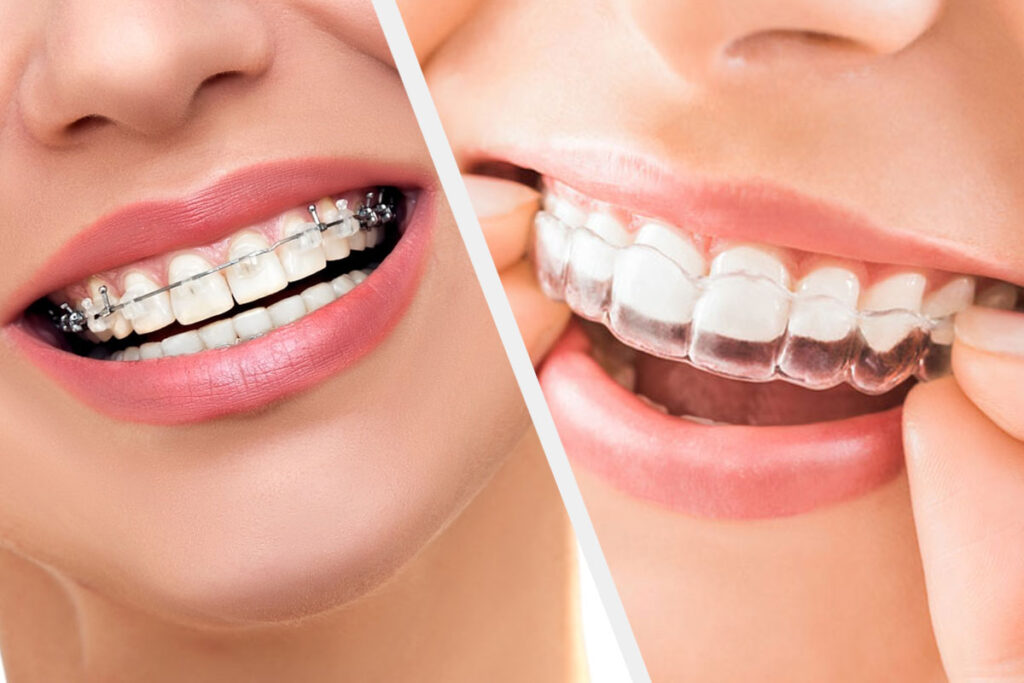
Understanding how these treatments differ helps patients make informed decisions about their oral health and long-term care, and many who explore Invisalign Clark NJ find it to be a convenient option tailored to modern lifestyles.
What Makes Invisalign Different from Braces
While both braces and Invisalign work to straighten teeth, they do so using very different methods:
- Braces: Use brackets and wires attached to the teeth, applying steady pressure to shift them into alignment.
- Invisalign: Uses a series of clear, removable aligners that gradually guide teeth into position.
The differences extend beyond appearance. Invisalign aligners are custom-made for each patient, allowing a level of precision and flexibility that traditional braces cannot always achieve.
Factors That Can Make Invisalign Faster
Not every patient will experience faster results with Invisalign, but several factors can contribute to shorter treatment times:
- Type of misalignment: Mild to moderate cases, such as gaps or slight crowding, often resolve quicker with Invisalign.
- Customized treatment: Digital planning allows aligners to target specific movements with precision.
- Patient compliance: Since Invisalign aligners can be removed, wearing them consistently for 20–22 hours per day is essential for timely results.
- No tightening visits: Unlike braces, which require regular adjustments, aligners are switched out every one to two weeks at home.
Invisalign vs Braces: A Time Comparison
To better understand potential timelines, here is a simple comparison between Invisalign and braces for common orthodontic concerns:
| Dental Concern | Average Treatment with Braces | Average Treatment with Invisalign |
|---|---|---|
| Mild crowding/gaps | 12–18 months | 6–12 months |
| Moderate alignment | 18–24 months | 12–18 months |
| Severe bite correction | 24–36 months | 18–24 months |
Note: Treatment times vary depending on patient needs and consistency with aligner use.
Comfort and Lifestyle Considerations
One of the main reasons patients prefer Invisalign is comfort. The aligners are smooth and do not involve wires or brackets that may cause irritation. For teenagers and adults alike, they also offer lifestyle advantages:
- Clear appearance makes them less noticeable.
- Removable for eating, brushing, and flossing.
- Fewer office visits compared to braces.
While these factors don’t directly affect speed, they often improve patient compliance, which indirectly shortens treatment time.
Role of Prosthodontics in Orthodontic Choices
In cases where tooth replacement or restoration is required alongside orthodontic treatment, prosthodontics becomes important. Patients who may need dental crowns, bridges, or implants often find Invisalign aligners easier to integrate with prosthodontic solutions compared to braces. Aligners can be planned around future restorations, reducing complications.
Connection Between Orthodontics and Oral Conditions
Some dental conditions, like tongue placement or bite patterns, can affect the timeline of orthodontic treatment. For example, patients exploring topics such as Learn the Basics of Lip Ties and Tongue Ties may also benefit from understanding how these conditions influence jaw development and alignment. Addressing such concerns early can make Invisalign treatment more effective and sometimes faster.
Why Choosing the Right Dentist Matters
When it comes to orthodontic decisions, the expertise of the dentist plays a significant role in treatment success. Patients often look for guidance on Choosing the Right General Dentist Clark NJ because proper diagnosis, treatment planning, and monitoring ensure efficient results. A dentist experienced in orthodontic planning can identify whether Invisalign truly is the quicker option for a particular case.
Integrating Other Dental Services
Orthodontics rarely stands alone. Many patients seeking straighter teeth also require additional care, including restorative or cosmetic treatments. For instance:
- Tooth colored fillings Clark: Aligners fit comfortably over restored teeth, making them a suitable option for patients who have had fillings.
- Implants Clark: Planning for dental implants often requires orthodontic consideration to ensure proper spacing.
- Cosmetic Dentist in Clark: Invisalign often pairs well with cosmetic dentistry goals, allowing patients to achieve both functional and aesthetic improvements.
- Clark Family Dentistry: Families looking for comprehensive dental care benefit from practices offering orthodontics alongside preventive and restorative services.
Practical Tips for Patients Considering Invisalign
Patients who want to explore Invisalign as a potentially faster alternative to braces should keep these points in mind:
- Wear aligners consistently for the recommended hours.
- Keep track of aligner changes on schedule.
- Maintain good oral hygiene to avoid treatment delays.
- Communicate with your dentist about any discomfort or fit issues.
- Follow dietary guidelines to prevent aligner damage.
Conclusion
Invisalign continues to grow in popularity as an orthodontic treatment because of its comfort, flexibility, and in many cases, its faster results compared to traditional braces. However, treatment time depends on the type of dental correction needed, the expertise of the provider, and patient commitment. By considering all these factors and consulting with the right dental professional, patients can decide if Invisalign is truly the best choice for their situation.
If you are weighing the benefits of Invisalign versus traditional braces, scheduling a consultation with a dental professional can help you determine which treatment best suits your needs and goals
FAQs
[sp_easyaccordion id=”2889″]






